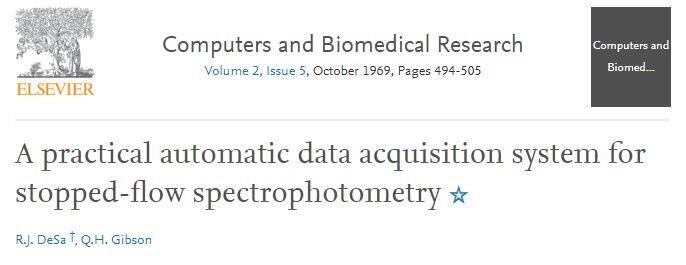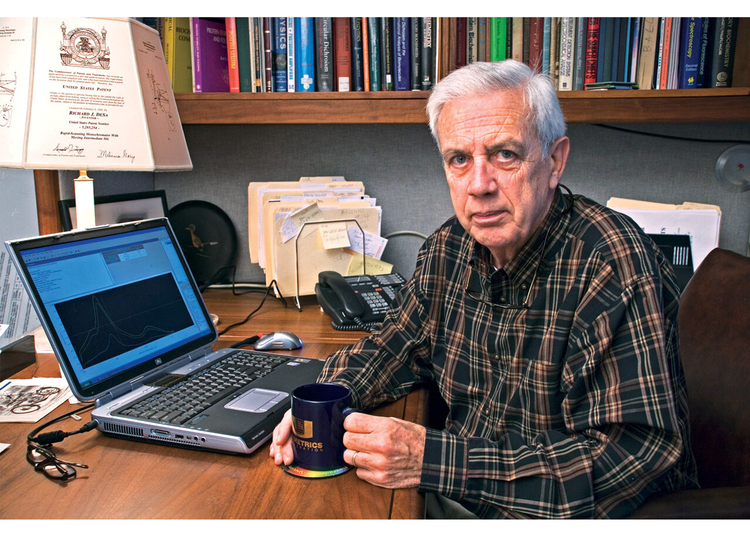Getting The Uv/vis/nir To Work
Getting The Uv/vis/nir To Work
Blog Article
Some Ideas on Uv/vis/nir You Should Know
Table of ContentsUv/vis/nir for BeginnersThe Single Strategy To Use For Uv/visUv/vis/nir for BeginnersCircularly Polarized Luminescence - TruthsThe smart Trick of Circularly Polarized Luminescence That Nobody is Talking About

Spectrophotometry is a tool that hinges on the quantitative analysis of particles depending on how much light is absorbed by colored substances.
How Circular Dichroism can Save You Time, Stress, and Money.
A spectrophotometer is typically utilized for the measurement of transmittance or reflectance of options, transparent or nontransparent solids, such as polished glass, or gases. Although numerous biochemicals are colored, as in, they take in noticeable light and for that reason can be determined by colorimetric treatments, even colorless biochemicals can often be converted to colored substances suitable for chromogenic color-forming responses to yield substances appropriate for colorimetric analysis.: 65 Nevertheless, they can likewise be created to measure the diffusivity on any of the listed light varieties that typically cover around 2002500 nm utilizing different controls and calibrations.
An example of an experiment in which spectrophotometry is used is the determination of the balance constant of a solution. A particular chemical reaction within a service might occur in a forward and reverse direction, where reactants form items and products break down into reactants. Eventually, this chain reaction will reach a point of balance called a stability point.
Get This Report on Circularly Polarized Luminescence
The quantity of light that goes through the service is a sign of the concentration of specific chemicals that do not permit light to go through. The absorption of light is due to the interaction of light with the electronic and vibrational modes of particles. Each kind of molecule has a private set of energy levels associated with the makeup of its chemical bonds and nuclei and hence will soak up light of specific wavelengths, or energies, leading to unique spectral homes.
Using spectrophotometers spans various clinical fields, such as physics, products science, chemistry, biochemistry. UV/Vis/NIR, chemical engineering, and molecular biology. They are extensively used in numerous markets including semiconductors, laser and optical manufacturing, printing and forensic evaluation, as well as in laboratories for the study of chemical substances. Spectrophotometry is frequently used in measurements of enzyme activities, determinations of protein concentrations, decisions of enzymatic kinetic constants, and measurements of ligand binding reactions.: 65 Ultimately, a spectrophotometer has the ability to identify, depending upon the control or calibration, what substances are present in a target and exactly just how much through calculations of observed wavelengths.
This would come as a service to the previously created spectrophotometers which were not able to take in the ultraviolet correctly.
The 30-Second Trick For Uv/vis/nir
It would be found that this did not give satisfying results, therefore in Model B, there was a shift from a glass to a quartz prism which permitted better absorbance results - circularly polarized luminescence (https://linktr.ee/olisclarity1). From there, Model C was born with a change to the wavelength resolution which wound up having three systems of it produced
It was produced from 1941 to 1976 where the cost for it in 1941 was US$723 (far-UV devices were an option at additional expense). In the words of Nobel chemistry laureate Bruce Merrifield, it was "probably the most crucial instrument ever established towards the development of bioscience." Once it became stopped in 1976, Hewlett-Packard created the first commercially available diode-array spectrophotometer in 1979 referred to as the HP 8450A. It irradiates the sample with polychromatic light which the sample absorbs depending on its properties. It is transmitted back by grating the photodiode array which identifies the wavelength area of the spectrum. Because then, the development and implementation reference of spectrophotometry gadgets has increased tremendously and has actually ended up being one of the most innovative instruments of our time.

Circular Dichroism Things To Know Before You Get This
The grating can either be movable or fixed.
In such systems, the grating is fixed and the strength of each wavelength of light is determined by a different detector in the variety. When making transmission measurements, the spectrophotometer quantitatively compares the portion of light that passes through a referral solution and a test solution, then digitally compares the intensities of the two signals and calculates the percentage of transmission of the sample compared to the recommendation standard.

Report this page